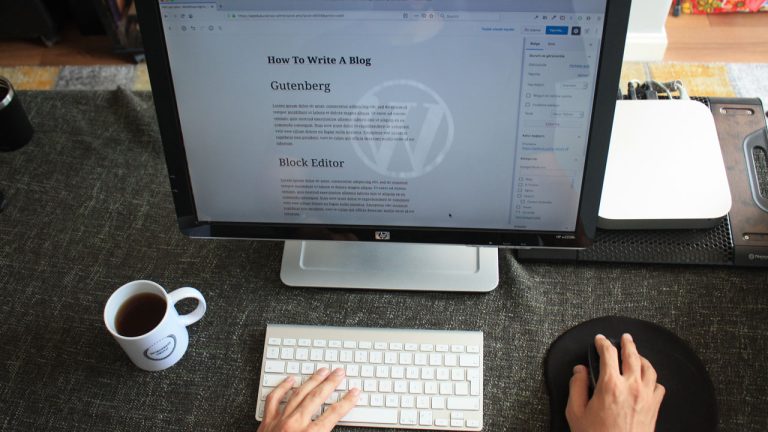
WordPress is a widely used and powerful content management system that enables users to create and manage websites with ease. However, like any software, WordPress can encounter issues and problems that users may need to troubleshoot and resolve. It’s important to keep your WordPress installation up to date and properly maintained to minimize the risk of problems and ensure optimal performance. Whether you’re encountering error messages or experiencing a slow website, these issues can be frustrating and can negatively impact your online presence. Fortunately, most WordPress problems can be resolved with a little bit of troubleshooting. In this post, we’ll cover some common WordPress problems and how you can fix them.
Problem 1: White Screen of Death
The White Screen of Death (WSOD) is a well-known issue that can happen in WordPress when there’s a conflict between the platform and a plugin or theme. When this happens, your website appears blank, and you can’t access the admin dashboard. This can be a scary situation, but the good news is you do not need to worry, it’s easy to fix.
Solution:
If you’re experiencing the WordPress White Screen of Death (WSOD), you can try the following steps to fix it:
- Access your WordPress site via FTP.
- Go to the wp-content folder and rename the plugins folder to something else, like “plugins_old.”
- Try accessing your WordPress website and the admin dashboard again. If the issue is fixed, you know that one of your plugins was causing the problem.
- Reactivate your plugins one by one to determine which one caused the issue.
- If step 3 doesn’t work, try switching to a default WordPress theme, like Twenty Twenty-One, to see if the issue is with your current theme.
Problem 2: 404 Errors
A 404 error occurs when a page or post is not found on your website. This can be caused by a variety of issues, including broken links, changes to your site structure, or problems with your permalinks.
Solution:
To fix 404 errors, start by going to Settings > Permalinks in your WordPress dashboard. Once you’re there, click “Save Changes.” This will refresh your permalinks and fix any 404 errors caused by problems with your permalinks. If that doesn’t work, you can try using a plugin like Broken Link Checker to identify any broken links on your site. Once you’ve identified broken links on your website that are resulting in 404 errors, you can fix them easily.
Problem 3: Internal Server Error
An Internal Server Error (ISE) is a common error message that can occur when there’s a problem with your server. This can be caused by a variety of issues, including a corrupt .htaccess file, conflicting plugins, or problems with your server configuration.
Solution:
To fix an Internal Server Error (ISE) caused by a corrupt .htaccess file in your WordPress site, you can try the following steps to fix it:
- Access your WordPress site via FTP.
- Go to the root directory of your site and locate the .htaccess file.
- Rename the file to something else, like “htaccess_old.”
- Go to Settings > Permalinks in your WordPress dashboard and click “Save Changes.”
- This will generate a new .htaccess file, which should fix the internal server error.
- If step 4 doesn’t work, you may need to troubleshoot other issues, like conflicting plugins or problems with your server configuration.
By following these steps, you can fix the Internal Server Error caused by a corrupt .htaccess file and get your WordPress site back up and running.
Problem 4: Login Problems
If you’re having trouble logging in to your WordPress site, it can be a frustrating experience. There are a variety of issues that can cause login problems, including forgotten passwords, hacked accounts, or issues with your browser.
Solution:
If you’re having trouble logging in to your site, start by resetting your password. You can do this by clicking the “Lost your password?” link on the login page and following the prompts. If this doesn’t work, you may need to troubleshoot other issues, like a hacked account or problems with your browser. To determine if your account has been hacked, you can try logging in with a different account or contacting your hosting provider. If you suspect that your browser is causing login problems, try clearing your browser cache and cookies or using a different browser.
Problem 5: Slow Website
A slow website can be a major problem for both users and search engines. There are many factors that can contribute to a slow website, including large image files, too many plugins, or problems with your hosting provider.
Solution:
To speed up your website, start by optimizing your images. You can do this by using a plugin like Smush or manually compressing your images before uploading them to your site. Next, try deactivating any unnecessary plugins. The more plugins you have, the slower your site will be. Finally, if you’re still experiencing slow load times, consider upgrading to a better hosting provider or using a caching plugin to speed up your site’s performance.
Conclusion:
WordPress problems can be frustrating, but they can usually be fixed with some basic troubleshooting. By following the steps outlined above, you can fix common WordPress problems and get back to running your website smoothly. Remember to always backup your site before making any changes, and if you’re not comfortable with troubleshooting on your own, consider hiring a professional to help you fix the issue. With a little patience and persistence, you can overcome any WordPress problem and keep your site running smoothly.

 Exclusive Offer Alert!
Exclusive Offer Alert!
 Get 10% OFF on Every Product!
Get 10% OFF on Every Product!


 Use Coupon Code:
Use Coupon Code:
 Shop Now & Save More!
Shop Now & Save More!


